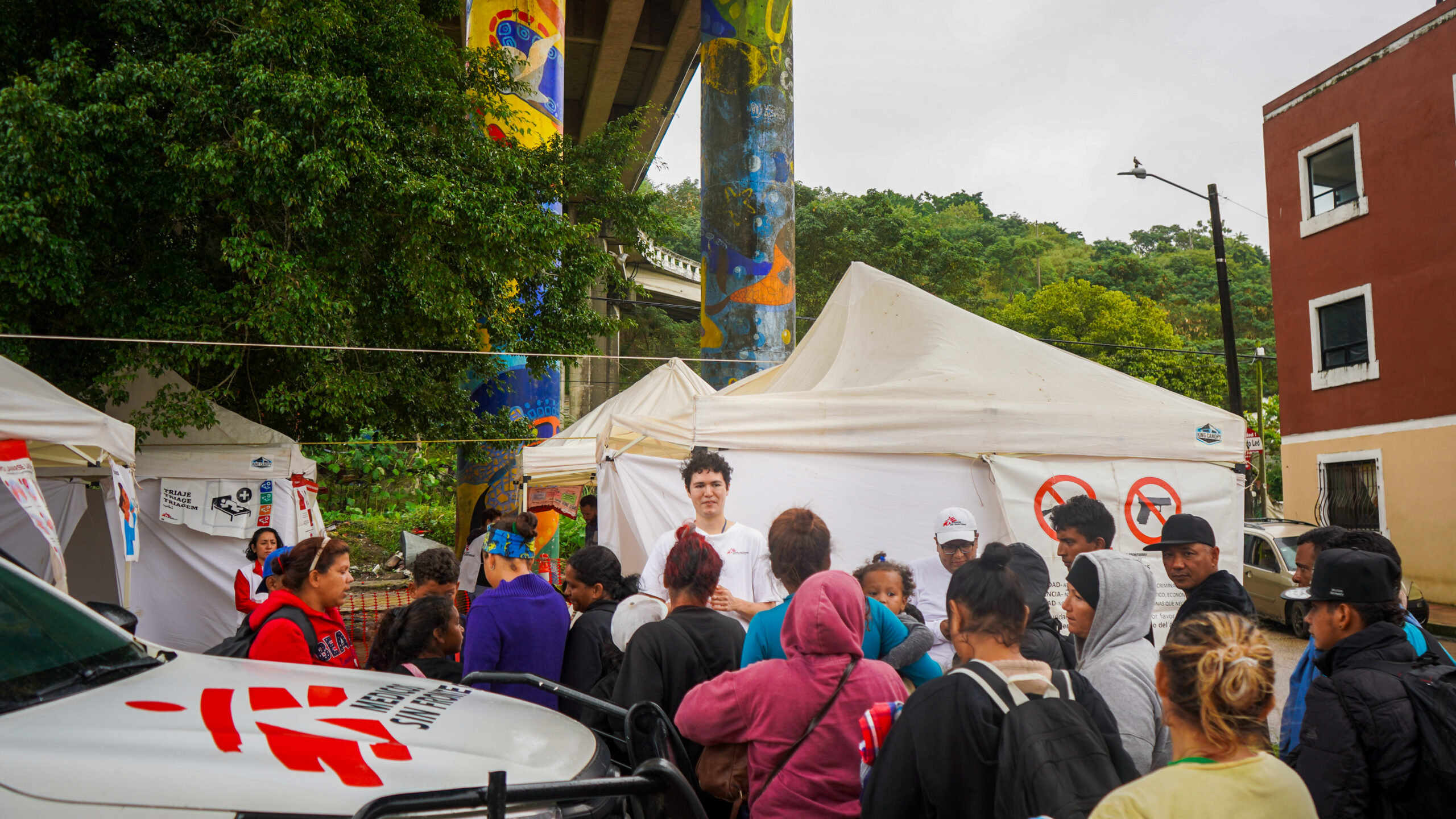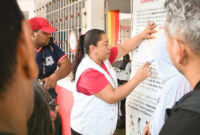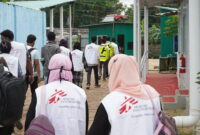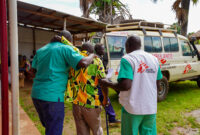Fear is also a border: Mental health for refugees stuck outside the U.S.
MSF provides critical psychological care for people on the move in the Americas.
Fear is an instinct, but eventually, it can become an illness. For many migrants, it starts the day it becomes unbearable to stay one more night in your home. When you pack a bag not knowing if you’ll ever return – or even survive.
“There are two ways to understand fear,” says Alejandro Alvarado, mental health activity manager for Doctors Without Borders/Médecins Sans Frontières (MSF) in Reynosa and Matamoros, Mexico. “The first is a natural emotional response to a threat: if I see a snake, I might flee or freeze. Both are normal, adaptive responses. That’s useful fear.”
“When fear is prolonged, it stops being a healthy reaction,” Alvarado says. “It becomes chronic and constant. And that’s when it starts to affect how we function day-to-day. It becomes pathological. Just like prolonged sadness can turn into depression, sustained fear can become disabling. It’s no longer just an emotion – it starts to affect our ability to live or survive in our environment.”
MSF teams operate throughout the migration route in the Americas, witnessing how physical, verbal, or psychological suffering turns into fear that paralyzes those who feel it but serves those who use it – whether political actors, criminal groups or a society lacking empathy. Between October 2024 and April 2025, following the election of President Donald Trump in the U.S., changes in migration policy and a decrease in migratory flows in the region, MSF provided over 2 200 individual mental health consultations in cities in Mexico and Guatemala. We also offered 251 treatments under the World Health Organization Mental Health Gap Action Program (mhGAP) protocol, for severe cases requiring psychopharmacological support.
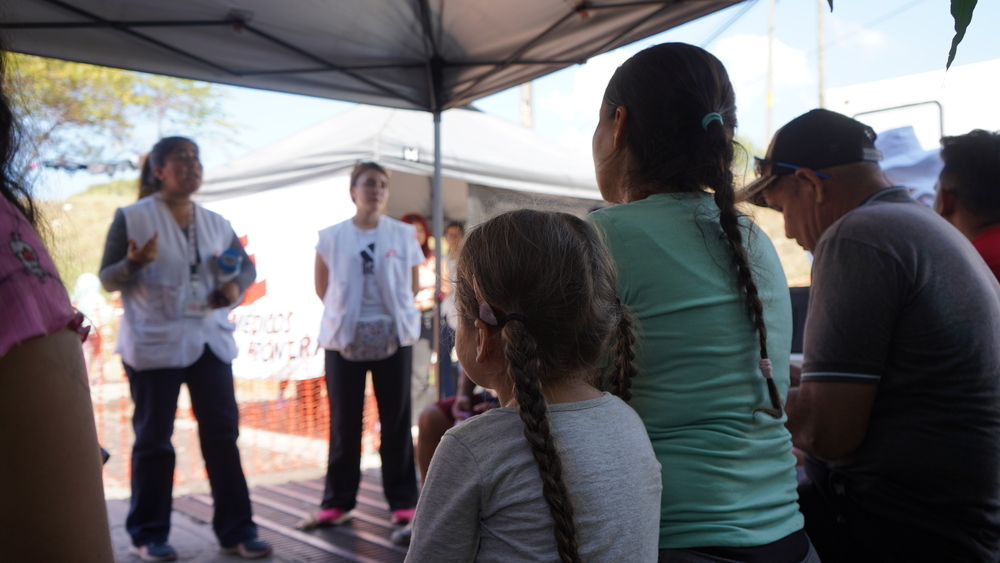
Fear as a cost
During migration, fear can quickly become more than an emotion. Fear is the first true cost of a journey that hasn’t yet begun – and one that keeps accruing long after a person has crossed any border.
In Tapachula, at Mexico’s southern border, Viridiana* says the terror began at home. “My children witnessed everything,” she says to MSF social workers at a local shelter. “I never thought I’d end up here. I didn’t even know where I was going. I just knew I had to leave, because my son’s father was threatening to kill me if he ever saw me with someone else.”
“Fear doesn’t necessarily respond to a visible threat. It’s a constant, anticipatory fear – not because of what already happened, but because of what could happen at any moment.”
Alejandro Alvarado, mental health activity manager for MSF in Reynosa and Matamoros, Mexico
“I have a cut on my face,” Viridiana says. “Two stab wounds on my legs, a blow to the head with a revolver, another to the nose with a glass plate. There are so many things you can see that I just can’t erase… and the ones in my heart, only God can heal.”
Across the migration route, MSF’s mental health teams work with people who have suffered physical or sexual violence – whether in their home countries or during their journey. In cities like Esquipulas in Guatemala and Tapachula, Mexico City, Reynosa and Matamoros in Mexico, stories like Viridiana’s are common. They are part of a systemic crisis, not an accident.
“From a mental health perspective, we see fear reflected in clinical histories,” says Alvarado. “But it goes far beyond anything that can be recorded as a symptom.”

Fear creates a barrier
In Esquipulas, a town near the Guatemalan-Honduran border, Paula* says she chose not to continue her journey out of fear of facing more violence. “We already made it to Mexico, we were in Tapachula. But we didn’t go any further because we were too afraid,” she says outside one of MSF’s mobile clinics. “They said if migration police didn’t catch you, the cartel would.”
Paula is a survivor of sexual violence in the Darién Gap, where armed men also threatened her four-year-old son. “In the jungle, they put a gun to his head. Thank God he’s still too innocent to understand most things, but yes, they put a gun to his head – to threaten his father.”
While in Mexico, Paula’s family attempted to apply for asylum legally through CBP One, a mobile app migrants were required to use to request appointments at the U.S. border to apply for asylum. But when the current U.S. administration canceled the program in January, her plans collapsed. “I’ve kind of come to terms with it now,”” she says months later. “But it hurt a lot knowing I was going to have to make the same journey again… only this time, with nothing. I’m okay now, but there are moments when I feel like someone is following me. Like there’s an enemy behind me.””
“Fear doesn’t necessarily respond to a visible threat,” Alvarado says. “But rather to past traumatic experiences or the context in which people are living. It’s a constant, anticipatory fear – not because of what already happened, but because of what could happen at any moment.”
Holistic support for invisible wounds
In cases like these, fear stops being a temporary emotion and becomes a disabling condition. While it is not the only factor, it is a recurring feature in the majority of mental health cases MSF supports. It causes deep suffering and numerous complications throughout the therapeutic process as patients and therapists work to regain mental stability.
Part MSF’s comprehensive care package is the mhGAP program, an initiative from the World Health Organization that trains medical and mental health staff to deliver psychiatric-level support in contexts where there are no psychiatrists, specialized services or access to medication. This protocol is activated when therapeutic interventions alone are not sufficient and allows for the integration of medical evaluation, psychological care and, when needed, pharmacological treatment.
“What we aim to do is expand treatment options for people, offering a comprehensive approach, with the person’s consent, and adapted to their reality,” says Alvarado. The biggest challenge is continuity: many of the people we treat are still on the move or living in unstable conditions, which makes it hard to follow through on therapeutic processes that require time.
That is why, in addition to mhGAP, MSF also works under a broader mental health and psychosocial support approach, which seeks to respond at the community level – before suffering turns into pathology.
Not all wounds are visible. But when fear threatens to become permanent, humanitarian care must find pathways to recovery where borders have been closed by prejudice and xenophobia.
*All names were changed to protect patients’ privacy and security
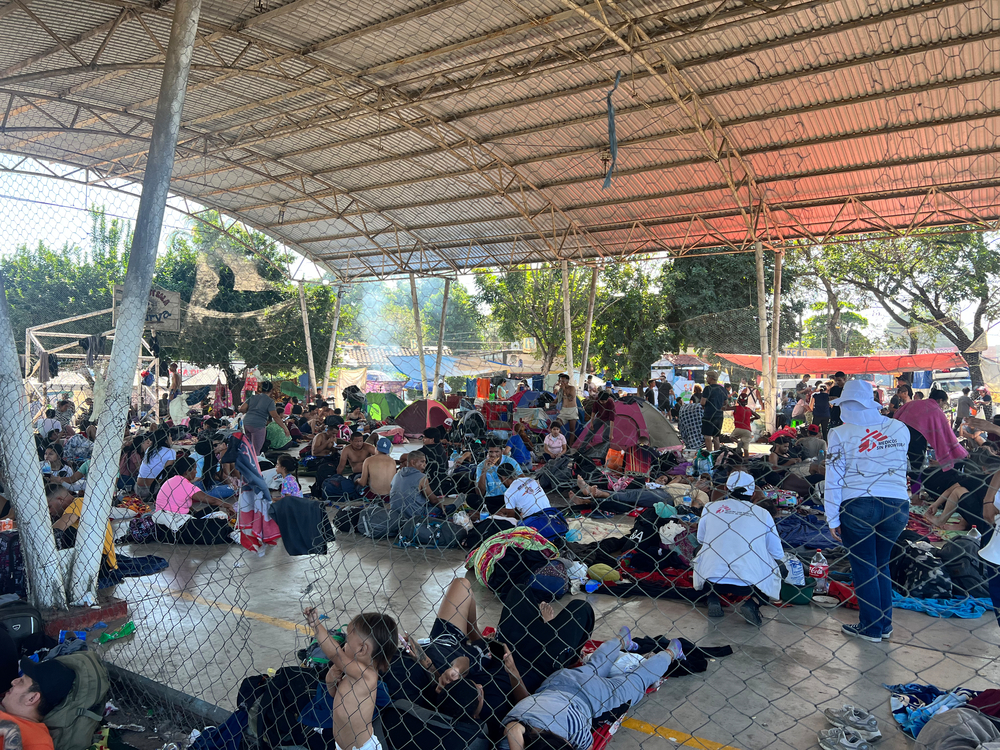
Mental healthcare for migrants in the Americas
MSF teams provide support to people in transit along the Latin American migration corridor, including mental health care, social work, health promotion and primary medical attention. We call on authorities, humanitarian organizations and civil society actors to stop deepening the mental health crisis among people on the move, and to take an active role in building safe environments that foster their physical, psychological and emotional wellbeing.
